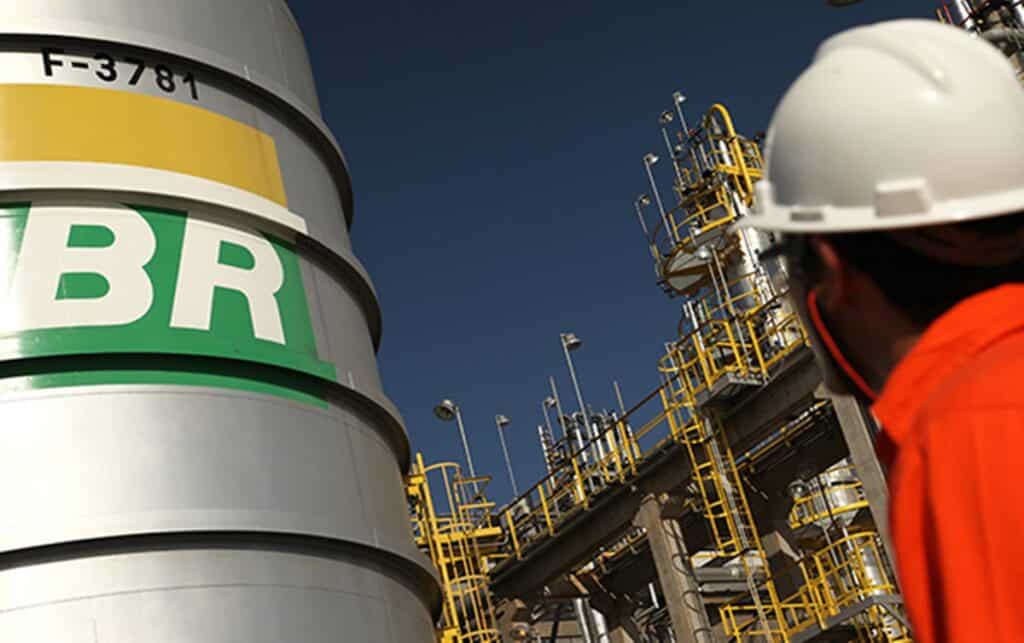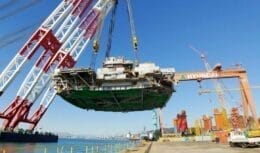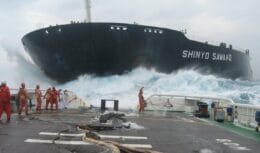
Pará-Maranhão Basin is the great promise to increase oil production in the national territory, according to researchers
Petrobras advances are increasing, and in the coming years the national company may count on exploration in basins in the state of Pará, according to researchers. They estimate that 8 sedimentary basins in the state could produce more than 20 billion barrels of oil. However, the extraction of this natural resource takes place in deep waters, which demands high technology and investment for exploration.
The coast of the state of Pará is inserted in the area known as the Equatorial Margin, which comprises 5 main sedimentary basins: Pará-Maranhão, Amapá Águas Profundas, at the mouth of the Amazon River, Ceará, Barreirinhas and Potiguar, all with potential for exploration up to 3 thousand meters deep.
Understand more about oil exploration and production by Petrobras in deep waters, using state-of-the-art technology
The data is still not accurate, but the projections are promising and point to the production of billions of barrels of oil by Petrobras
In an interview with the “O Liberal” portal, published on May 14, 2022, Petrobras' executive exploration manager, Mário Carminatti, points out that, although the data are not yet so precise, there is a high probability that the petroleum-generating rocks that exist in neighboring countries are also in the territory of Pará. It remains to use more geophysical data and carry out research in the region to be sure of the extraction potential.
However, still in an interview with the “O liberal” portal, other research professors such as Allan Kardec Dualibe Barros Filho, Ronaldo Gomes Carmona and oil exploration consultant Pedro Victor Zálan point to a very optimistic scenario. They claim that the Pará-Maranhão basin is the most promising in the region, receiving the name "new pre-salt" for having a vast oil reserve, with high potential for exploration and recovery.
Also according to these researchers, a production of between 20 and 30 billion barrels is estimated, half of what has already been explored in the Pre-salt until today. This great discovery will contribute to greater economic development in the region and benefit states such as Amapá, Pará and Maranhão, placing the north as a prominent region in Brazil.
However, Mário Carminatti does not agree with the pre-salt comparison, giving more skeptical notes based on geophysical data obtained so far. Still, he says we should be excited, because exploration in this region contributes a lot to the sustainability of national oil and gas production.

The exploration of the areas of Amapá-Águas Profundas (Foz do Amazonas) was granted in 2013 to the Consortium formed between TotalEnergies, Petrobras and BP, but in 2021, only Petrobras decided to continue with the concessions
In 2013, the National Petroleum Agency (ANP) even granted exploration in the Foz do Amazonas Basin region to a French multinational called TotalEnergies, which invested BRL 250 million for five blocks in the area. This company was part of the consortium along with Petrobras and BP. However, in 2021, the companies BP and TotalEnergies chose to leave the consortium and only Petrobras became part of the framework.
In this new scenario, Petrobras becomes the main operator in the region of the Pará basins, in particular, with potential for deep waters. As this new phase demands high technology, the state-owned company intends to invest more than R$ 2 billion in the entire equatorial margin. The purpose of this exploration is to promote harmony in the local ecosystem, in a sustainable way, and contribute to economic development, offering jobs and bringing profits.
Regional exploration has some environmental risks and challenges ahead, as there is not extensive knowledge about the local ecosystem
The exploration of this new region is of concern to some environmentalists and even specialists in deep water exploration. This is because the region's ecosystem is still being studied and there is not ample knowledge about what oil exploration can entail for the region. A study published in 2016 by Science Advances showed that there are corals in the deep regions of the mouth of the Amazon River, for example.
In addition, the activity can generate environmental liabilities and run into technical requirements of environmental legislation. The Great Reef System of the Amazon, known by the acronym GARS, discovered in 2016, is one of the biggest fears of specialists. After all, the occurrence of this formation in the world occurs at a rate of only 5 to 10%, which is very rare and a true natural relic of Brazil. As it is a recent discovery, little is known about the local biodiversity and studies are still being carried out.
There is also a fear that exploitation could affect extractive fishing activities in the region, affecting around 2 million people who depend on the activity for their survival. However, Mário Carminatti points out that Petrobras has a broad history of social and environmental responsibility and has always been committed to maintaining collaborations with universities and segments of society in order to disseminate potential risks. In addition, the company is very concerned with local development and does not intend to move forward without first analyzing all the scenarios and employing the use of technology and inovation to ensure security.
Two processes for environmental licensing in the region have already started and follow strict criteria to mitigate potential risks
Carminatti claims that the company invests heavily in environmental studies and in the rigor of procedures to guarantee the safety of operations. Therefore, 2 environmental licensing processes for exploration have already been initiated. The first of them refers to the FZA-M-59_R11 concession, and is in the stage prior to the Pre-Operational Assessment. Approval is expected in the second half of 2022.
The second licensing process involves 5 concessions managed by Petrobras in the region: FZA-M-57_R11, FZA-M-86_R11, FZA-M-88_R11, FZA-M-125_R11 and FZA-M-127_R11. These are already being analyzed by Ibama, in relation to the report delivered on the Environmental Impact Study (EIA-RIMA).
A third licensing process is still being evaluated and comprises the concession of the Pará-Maranhão Basin. However, your request is still being reassessed to ensure greater adherence to Petrobras' strategic planning and to bring important aspects of safety into operations.












